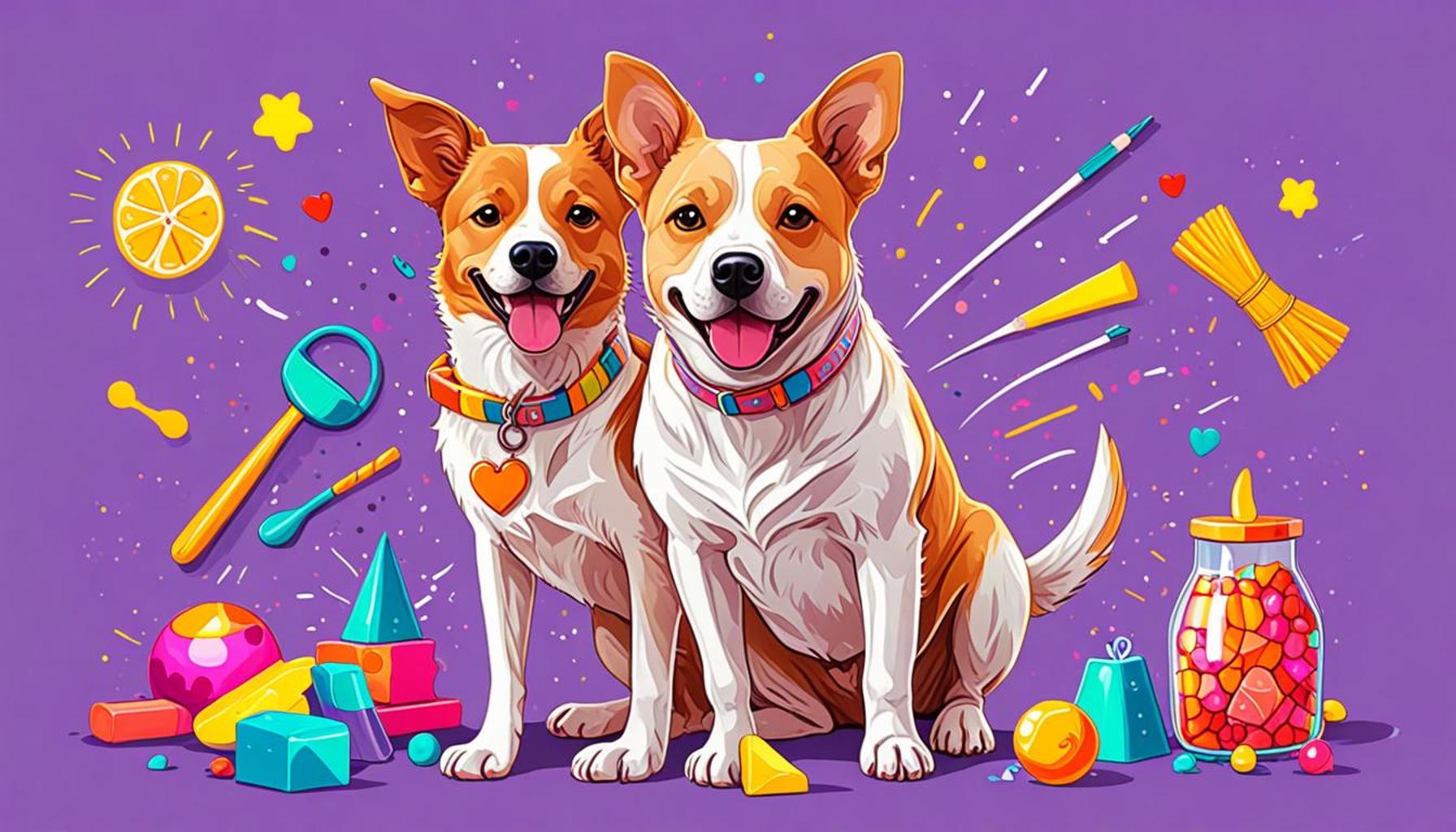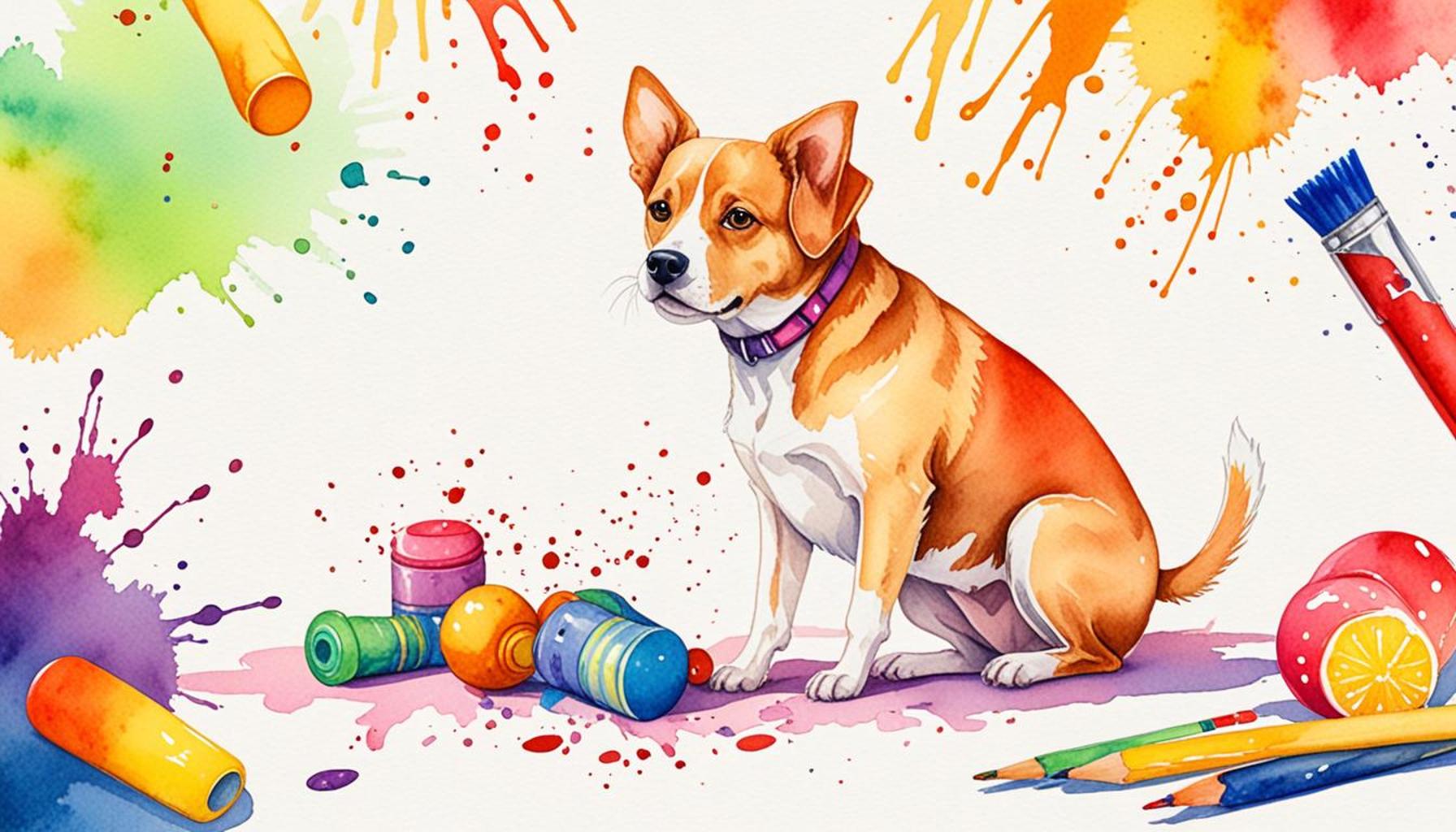How to Use Positive Reinforcement to Train Your Dog Effectively

Unlocking the Secrets of Dog Training
Training your dog can be a rewarding and enriching experience. With the right methods, you can foster a deep bond with your furry companion while ensuring they understand essential commands and proper behavior. One of the most successful techniques among dog trainers across the United States is positive reinforcement.
This approach focuses on rewarding desired behaviors instead of using punishment. By providing treats, praise, or playtime, you encourage your dog to repeat those behaviors. Incorporating positive reinforcement can lead to a happier and more disciplined pet. Here are some key aspects to consider:
- Rewards: Use a variety of rewards such as small, tasty treats, favorite toys, or affectionate petting to motivate your dog. Different dogs may respond better to different types of rewards, so experimenting with options can be beneficial. For instance, while some might jump for joy at a squeaky toy, others might prefer a special treat that they enjoy only during training.
- Consistency: It’s essential to use the same commands and rewards every time. Dogs thrive on routine and knowing what to expect. For example, if you are teaching your dog to sit, always use the word “sit” along with the same hand signal, ensuring everyone in your household uses the same commands.
- Timing: Delivering rewards immediately after your dog displays a desired behavior is crucial in reinforcing learning. This immediacy helps your dog associate the good behavior with the reward, solidifying the connection in their mind. If your dog sits on command, rewarding them within a few seconds sets the expectation for future behaviors.
The benefits of positive reinforcement extend far beyond obedience. This method promotes a trusting relationship with your pet, cultivating a loving and supportive atmosphere where your dog feels safe to explore, make mistakes, and learn. Over time, your dog becomes more eager to learn new tricks and commands, while fear of punishment diminishes. They naturally develop confidence and exhibit reduced behavioral issues.
Through this article, you will discover practical tips and strategies to implement positive reinforcement effectively. For instance, consider enrolling in a local training class or watching instructional videos online to observe techniques in action. Understanding this training method can transform the way you and your dog connect, making learning a fun and engaging experience for both of you. Ultimately, investing time in training and nurturing your dog will generate immense rewards for both of you as you build a nurturing environment rooted in trust and respect.
DIVE DEEPER: Click here to discover the benefits of balanced nutrition for your pets
Creating a Positive Training Environment
To successfully implement positive reinforcement in your dog training routine, it’s crucial to create a positive and engaging environment for both you and your dog. This means setting up your training sessions for success by ensuring they are enjoyable and stress-free. Here are some strategies to help you establish that environment:
- Choose the Right Location: Selecting a quiet and familiar space for training can significantly affect your dog’s focus. Avoid busy areas with distractions, like other pets or loud noises, which can hinder their ability to learn effectively. A quiet room at home or your backyard can serve as a fantastic training ground.
- Keep Training Sessions Short: Typically, dogs have a limited attention span, especially puppies. Aim for training sessions that last between 5 to 10 minutes, allowing you to maintain your dog’s attention. You can have multiple short sessions throughout the day instead of one long session, ensuring your dog remains eager and enthusiastic to learn.
- Use Engaging Activities: Incorporate variety into your training sessions to keep your dog engaged. Beyond basic commands, teaching new tricks or incorporating fun games can help. Playing fetch while practicing commands can merge fun and learning, reinforcing the desired behaviors in an enjoyable way.
Understanding your dog’s unique personality and learning style is another key aspect. Each dog has different motivations and preferences, which can affect how they respond to training methods. While some dogs are food-oriented and may thrive with treat-based rewards, others may be more motivated by praise or play. Observing your dog’s reactions can guide you in choosing the most effective rewards.
Moreover, patience is essential in any training regimen. Dogs don’t learn some commands overnight; repetition and encouragement will yield the best results. When mistakes happen, remember to stay calm and steer the training in a positive direction. Instead of scolding, redirect your dog towards the desired behavior. This approach not only aids in learning but also fosters a loving and trusting relationship.
Building Your Training Toolkit
Having the right tools can greatly enhance your positive reinforcement training. Here are some items to consider adding to your training toolkit:
- Treat Pouches: A treat pouch allows for quick access to rewards, making the training process smoother and more effective.
- Clicker: A clicker is a useful device for marking desired behaviors instantly. The sound helps your dog recognize that they’ve done the right thing and that a reward is forthcoming.
- Toys: Utilizing your dog’s favorite toys is an excellent way to celebrate accomplishments. Engaging them in playtime can serve as a reward that reinforces their positive behavior.
In conclusion, the overall objective of positive reinforcement is to create an enjoyable learning experience that strengthens the bond between you and your dog. By fostering a supportive atmosphere, keeping training sessions concise, and using the right tools and techniques, you can unlock the full potential of positive reinforcement, creating a happier and more obedient companion.
Understanding Positive Reinforcement
Positive reinforcement is a powerful tool in dog training that focuses on rewarding desired behaviors rather than punishing undesired ones. This method not only strengthens the bond between you and your dog but also creates a more enjoyable training experience. In essence, positive reinforcement works on the principle of encouraging good behavior by providing rewards, which can range from treats and toys to praise and affection.
Steps to Implement Positive Reinforcement
- Identify the Desired Behavior: Before you can begin training, it’s essential to determine what specific behavior you wish to reinforce. Whether it’s sitting, staying, or coming when called, clarity is key.
- Choose the Right Reward: Not all dogs respond to the same rewards. Experiment with different treats, toys, or even verbal praises to find what motivates your furry friend the most.
- Timing is Everything: The effectiveness of positive reinforcement relies heavily on timing. Be sure to reward your dog immediately after they perform the desired behavior, so they can make the connection.
- Be Consistent: Consistency is critical in training. Use the same commands and rewards each time to help your dog understand what is expected of them.
- Increase Difficulty Gradually: Once your dog has mastered a command, you can begin to add distractions or increase the difficulty level. Always remember to reward them for their efforts!
Challenges with Positive Reinforcement
Though positive reinforcement can be highly effective, it is not without its challenges. Some dogs may become overly reliant on treats, while others may lose interest over time. To combat this, it’s important to gradually phase out the food rewards by incorporating more verbal praises and affection as your dog learns and grows.
Overall, utilizing positive reinforcement effectively requires patience, creativity, and understanding of your dog’s individual personality. By following these strategies and continuously adapting to your dog’s needs, you can create a positive and fulfilling training experience that fosters better behavior and deepens your relationship.
| Advantage | Description |
|---|---|
| Strengthens Bond | Creates a loving and trusting relationship between dog and owner. |
| Fosters Learning | Promotes quicker learning of commands and reduces anxiety. |
This method not only encourages effective learning but also minimizes behavioral issues, leading to a well-mannered and happy dog.
DIVE DEEPER: Click here to discover the benefits and risks of homemade diets for pets</a
Effective Techniques for Positive Reinforcement
Once you’ve created a positive training environment for your dog, the next step involves employing specific techniques that enhance the effectiveness of positive reinforcement. Mastering these techniques can further fine-tune your training sessions and help foster a deeper connection between you and your pet. Below are some engaging methods worth considering:
- Timing is Key: Successful positive reinforcement relies heavily on timing. It’s essential to reward your dog immediately after they exhibit the desired behavior. This instant feedback reinforces the behavior better than delayed rewards. For instance, if your dog sits when you ask, rewarding them right away with a treat or praise ensures they associate the action with the reward.
- Use a Variety of Rewards: Mixing up the types of rewards can keep your dog’s interest high. While food treats are effective, pairing them with other forms of reinforcement such as praise, playtime, or petting can provide a more holistic approach. For example, you might offer a treat for a well-executed command, followed by a few minutes of play to celebrate their success.
- Shaping Behavior: This technique involves rewarding successive approximations toward the desired behavior. Start with a small step that is similar to the final goal and gradually raise the bar. For example, if you are teaching your dog to roll over, you can start by rewarding them for simply lying down, then rewarding them as they start to tilt their body, progressively moving to the full roll.
Incorporating Real-Life Situations
Training does not have to be limited to specific sessions; integrating training into everyday life can reinforce positive behaviors naturally. Here are some scenarios you can utilize:
- Leash Training: When walking your dog, use positive reinforcement for good behaviors like walking nicely beside you or waiting patiently at crosswalks. Offering treats or praise when they exhibit calm behavior can create a more enjoyable walking experience for both of you.
- Greeting People or Other Pets: Dogs can often be excited during greetings. To manage this, applaud calm behavior upon meeting others. If your dog remains composed when meeting a new person, reward them to encourage continued calmness in future interactions.
- Daily Commands: Simple commands like “sit,” “stay,” or “come” can be integrated into daily routines. Whenever your dog successfully responds to any of these commands, regardless of how trivial it may seem, celebrate their compliance with a reward. This consistency not only reinforces training but also emphasizes the importance of listening in various situations.
Additionally, establishing a regular practice schedule can greatly assist in the training process. Frequent, short sessions can help your dog retain commands and tricks over time. Consider keeping a journal of your training sessions, noting which commands or behaviors your dog responds to best, making it easier to adjust your approach as needed.
Lastly, embrace the idea that training can be fun for both you and your dog. Experimenting with different techniques and approaches can keep things fresh and stimulating. A happy, engaged dog is more likely to learn and grow, so don’t shy away from exploring new activities that promote learning through positive reinforcement.
DISCOVER MORE: Click here for essential pet adoption resources
Conclusion
In conclusion, the art of using positive reinforcement to train your dog effectively is not only a powerful technique but also a rewarding journey for both you and your furry companion. By establishing a supportive atmosphere, understanding the significance of timing, and incorporating a variety of rewards, you can significantly enhance your dog’s learning experience. Training extends beyond structured sessions; it is essential to weave these principles into real-life situations to ensure your dog’s behavior is reinforced in practical contexts.
Moreover, developing a consistent training routine and embracing creativity are vital components to facilitate growth and understanding. As you explore new training methods, remember that a happy and engaged dog is more likely to learn effectively. This journey is not just about commands; it’s about cultivating a meaningful bond with your pet, built on trust and encouragement. The benefits are profound—a well-trained dog fosters a harmonious relationship, enhances their confidence, and creates a more enjoyable living environment for both of you.
As you delve deeper into the fascinating world of positive reinforcement, consider seeking out resources and community support. Opportunities abound to improve your training skills, whether through local dog training classes, online forums, or literature on canine behavior. Embrace the adventure, and watch as your dog transforms into a responsive and joyful companion, thriving through the power of positive reinforcement.



